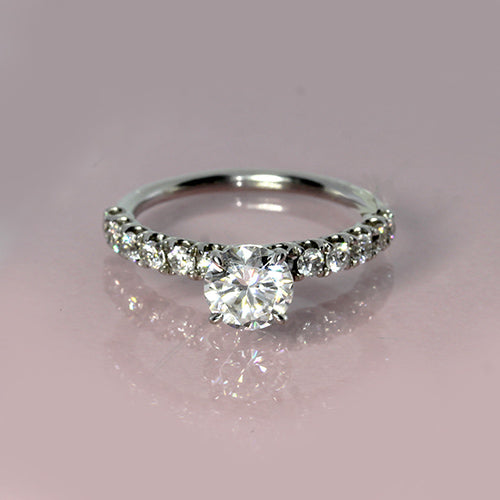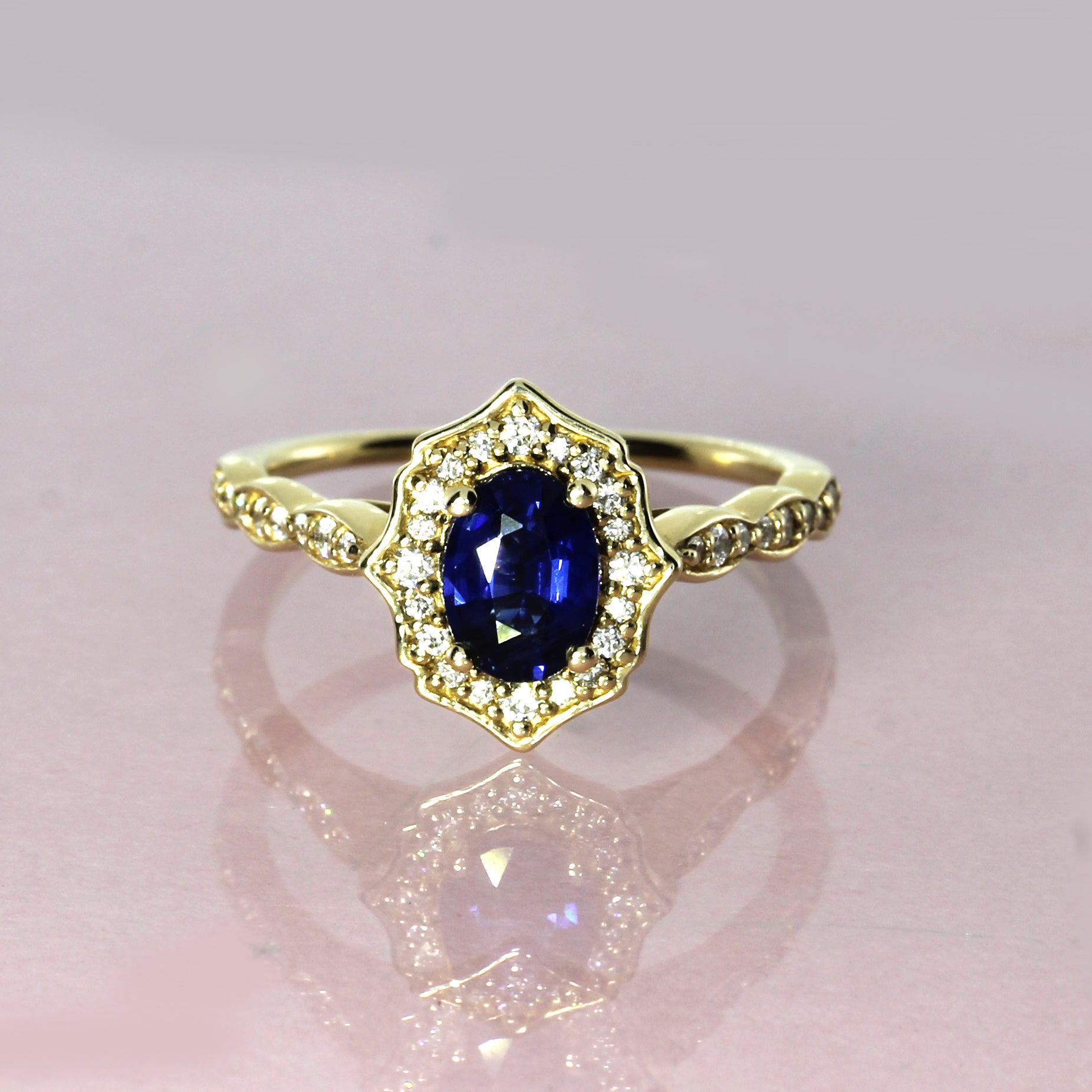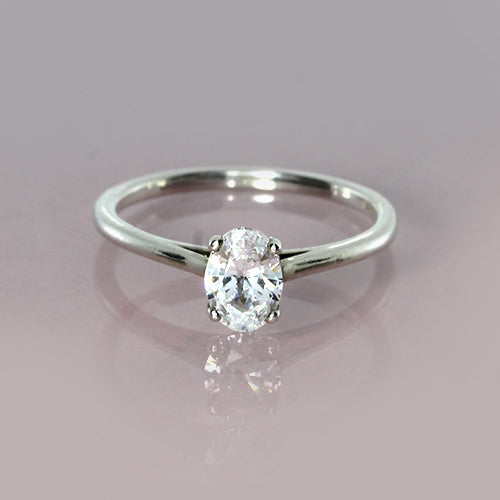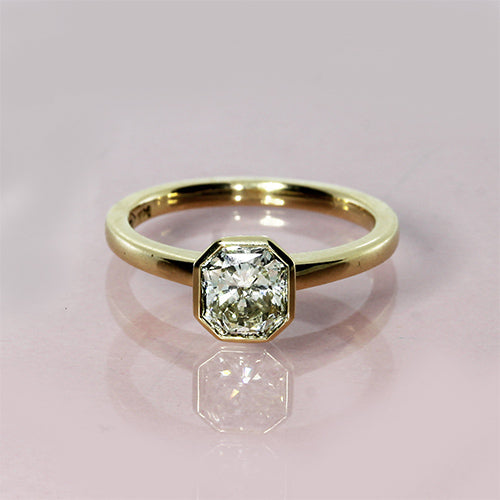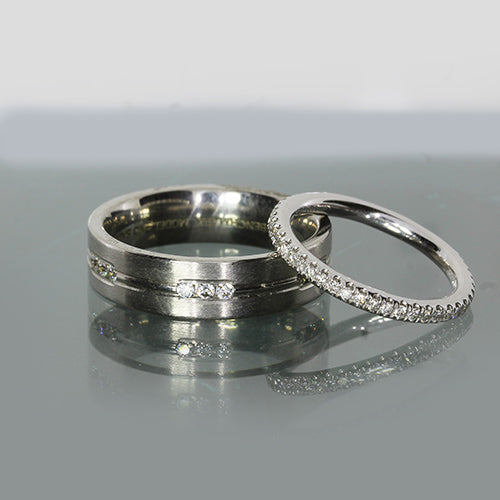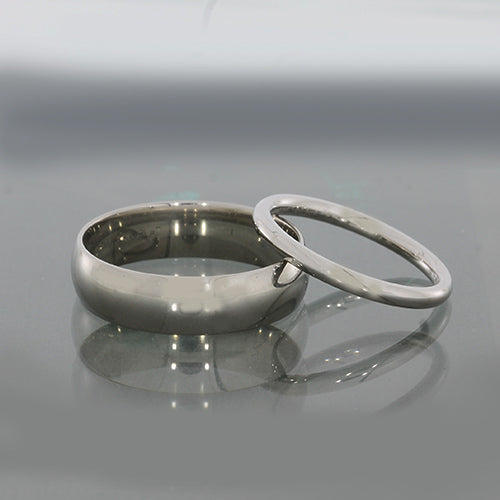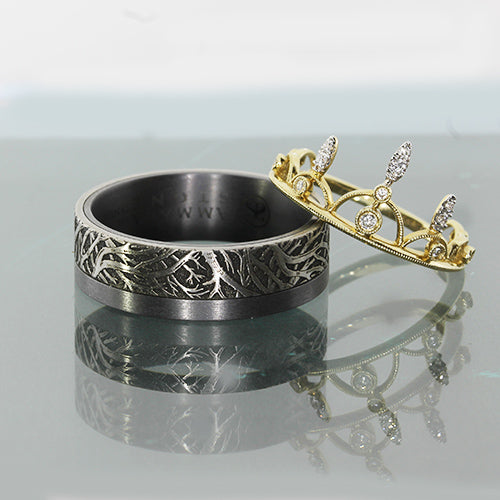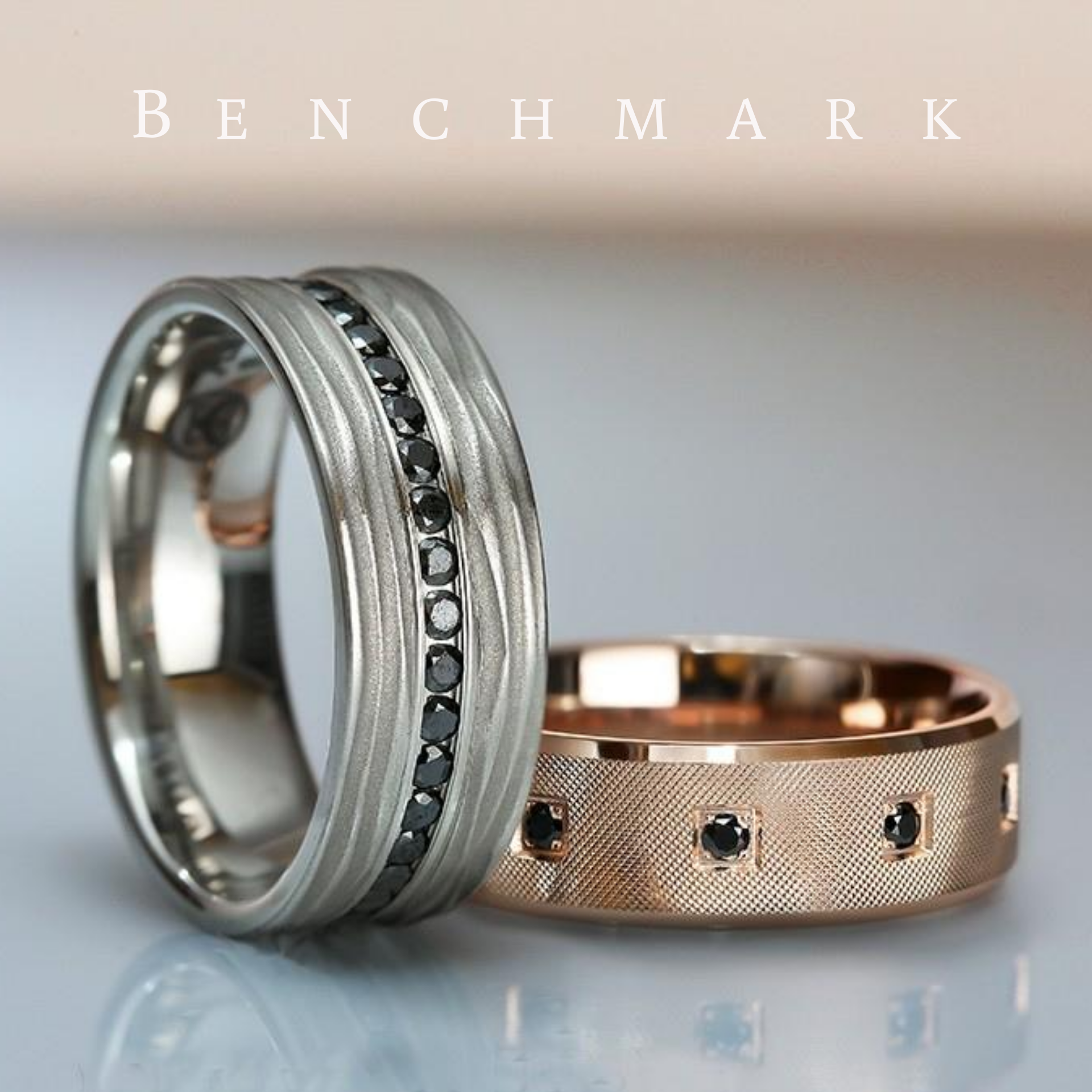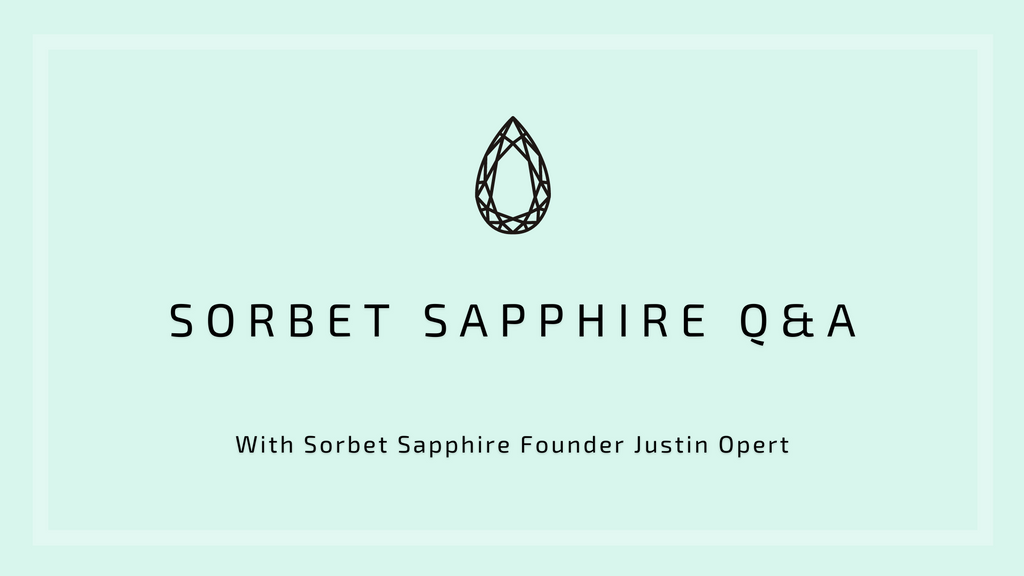Q. Justin, can you please tell us a little bit about yourself and about Sorbet Sapphire?
It would be my pleasure. I am the founder of Sorbet Sapphire, a passion project that was born out of necessity, but has grown into a true love affair. I have been a part of the Canadian jewellery industry since 2008; first working under the mentorship of my father in the diamond industry.
In 2012, I was fortunate enough to travel to Bangkok, Thailand, which is considered by most jewellery professionals to be the gemstone capital of the world! While both educational and enlightening, my trip would become life-changing. Like most individuals, I simply thought that all sapphires removed rom the earth's surface were blue. This preconceived notion was quickly shattered as I began to learn that in fact the blue sapphire was the most common colour but not the only colour. More astonishing was that sapphires actually came in a spectrum of colours but due to the popularity of the blue sapphire, these spectacular sapphires were overlooked and under-appreciated.
When I returned to Canada, I tried with less success to encourage traditional jewellery retailers to showcase natural, colourized sapphires. The most common reason for this lack of interest was due in large part to laziness and the belief by retailers that it was not in their best interest to try and educate their clientele. Knowing this, I decided to take it upon myself to educate the public about the spectacular world of natural, coloured sapphires. Hence, Sorbet Sapphire was launched. Today, I am so grateful to work alongside jewellery retailers, such as Lindsay and the entire team at True Bijoux, who believe that everyone should know about the spectrum of colours that exist.
Q. What should somebody look for when purchasing a sapphire?
What a great question! I have come to believe that the most important thing to consider when purchasing a sapphire is the shade of colour that you are most interested in. I say this because it would be impossible to find what you are looking for unless you are open to origin or treatment. That being said, if you happen to be on the hunt for a blueish green sapphire, you might be in luck if you are open to a sapphire from Madagascar, Australia or Montana.
However, if you are only interested in an unheated sapphire then it might be tough to find a blueish green sapphire from Montana. That's why I strongly encourage all those interested in purchasing a natural, coloured sapphire to remain open throughout the process.
Q. What are some reasons somebody would buy a loose sapphire?
Buying a loose sapphire is a very personal experience and would not occur unless this person is either already accustomed to coloured gemstones or are looking to own something truly unique. Blue sapphires are the most common colour of sapphire and can most likely be found at your neighbourhood jewellery retailer. However, a natural, coloured sapphire can be quite rate and special. This is very exciting to many individuals including myself (and hopefully to you as well).
Q. How common are heat treated sapphires, and why are some sapphires heat treated and others are not?
Dating as far back as the Roman Empire, sapphires have been purchased for their blue hue. In fact, of all the sapphires available for purchase worldwide, only about 10% are naturally coloured (untreated) whereas about 90% of all sapphires have been treated in some way (generally to enhance colour and clarity).
The most traditional permanent form of treatment involves the heating of a sapphire. It is important to note that certain shades do not exist unless heat treatment takes place. That is why heat treatment, once understood, should be accepted and appreciated. At Sorbet Sapphire, we are proud to offer both untreated and heated sapphires.
Q. What determines the value of a sapphire?
Determining the value of a sapphire goes back generations, if not centuries. Historically, the most desired shade is the royal blue sapphire. However, it is important to note that an unheated royal blue sapphire would garner more value than a heated sapphire of similar quality. It does not end there as the original of a sapphire can also determine it's blue. For example, a royal blue sapphire from Kashmir would be worth more than a royal blue sapphire from Sri Lanka (assuming the two sapphires are very close in quality). This is particularly because sapphires from Kashmir have been mined for decades, making Kashmir sapphires extremely rate and valuable. It is interesting to note that when Padparadscha sapphires were discovered in Tanzania, many thought they were from Sri Lanka because until that point, Padparadscha sapphires only came from Sri Lanka.
Today, you are likely to spend more on Padparadscha from Sri Lanka sapphire than from Tanzania. In my opinion, while original and treatment as well as quality matter, the most important thing is the feeling one gets when you first lay eyes on a sapphire that speaks to your soul. When that happens, it doesnt matter where it comes from or if it is treated, what matters is what you are drawn to and it holds a very special place in your heart.
Q. What is the most desirable shape of a sapphire?
That is a very tough question because the answer changes. Historically, the most common shape is the oval mixed-cut. This is due in large part because of the shape of the sapphire rough. Cutters are most successful at retaining the most weight when cutting an oval. When cutting other shapes, cutters will lose more weight and this is not always a good thing.
However, if someone were to ask me which shapes receive the most interest at the moment, I'd be quick to say (in no particular order) that traditional shapes include oval, octagon, pear, and round continue to lead the way. Other less traditional shapes are certainly growing in popularity since as marquise hexagon, and shield-cut.
Q. How do you ensure you get the best value for your money?
Great question, and a very easy one as well. I say this because it is imperative that when looking to purchase a sapphire, you begin by trusting your jeweller unconditionally. While I realize that this may seem foreign to some, it is the best way to find the perfect natural, coloured sapphire for the best value. It is also important to do your homework. This does not mean spending hours analyzing the varying changes in price on a daily basis between multiple jewellers but rather by learning some of the more subtle differences between two sapphires.
If your jewellery retailer is there to look after your best interest, they will always shape what they believe to be the most important details to consider. This can be very helpful as the internet, while also helpful, can mislead and over emphasize a specific point that may not really matter. In the end, I encourage anyone interested in sapphires to place their trust in their jeweller, that's #1, and then take some time educating one's self.
Q. Is sapphire recommended for everyday wear, like a diamond?
Yes, most certainly. Sapphires are the second hardest natural mineral, only behind the diamond. Unlike other gemstones which as fragile and can break quite easily, sapphires are very durable and can withstand daily wear. That said, I strongly encourage choosing a natural, coloured sapphire for any engagement ring.
Q. Why do you suggest a sapphire over a diamond?
Yes, most certainly. Sapphires are the second hardest natural mineral, only behind the diamond. Unlike other gemstones which are fragile and can break quite easily, sapphires are very durable can withstand daily wear. That said, I strongly encourage choosing a natural, coloured sapphire for any engagement ring.
Q. Why do you suggest a sapphire over a diamond?
Aside from costing much less than an earth-mined diamond, a natural, coloured sapphire is certainly from unique. In fact, I am often told that the main reason why someone has picked a sapphire over a diamond was because the colour they selected was a reflection of their personality and they wanted to share this with those around them. I would have to end by saying that you will never get bored of a sapphire. This is because it can change colour depending on the lightening. This makes a sapphire truly special and one-of-a-kind.
Shop some of our beautiful loose sapphires below!
See more of our sapphires here!


